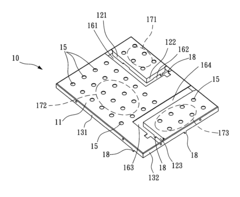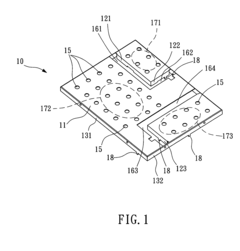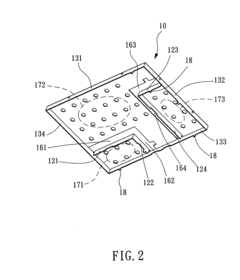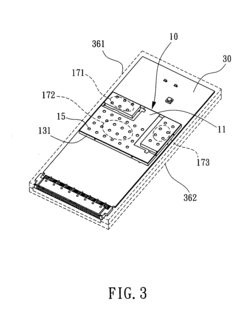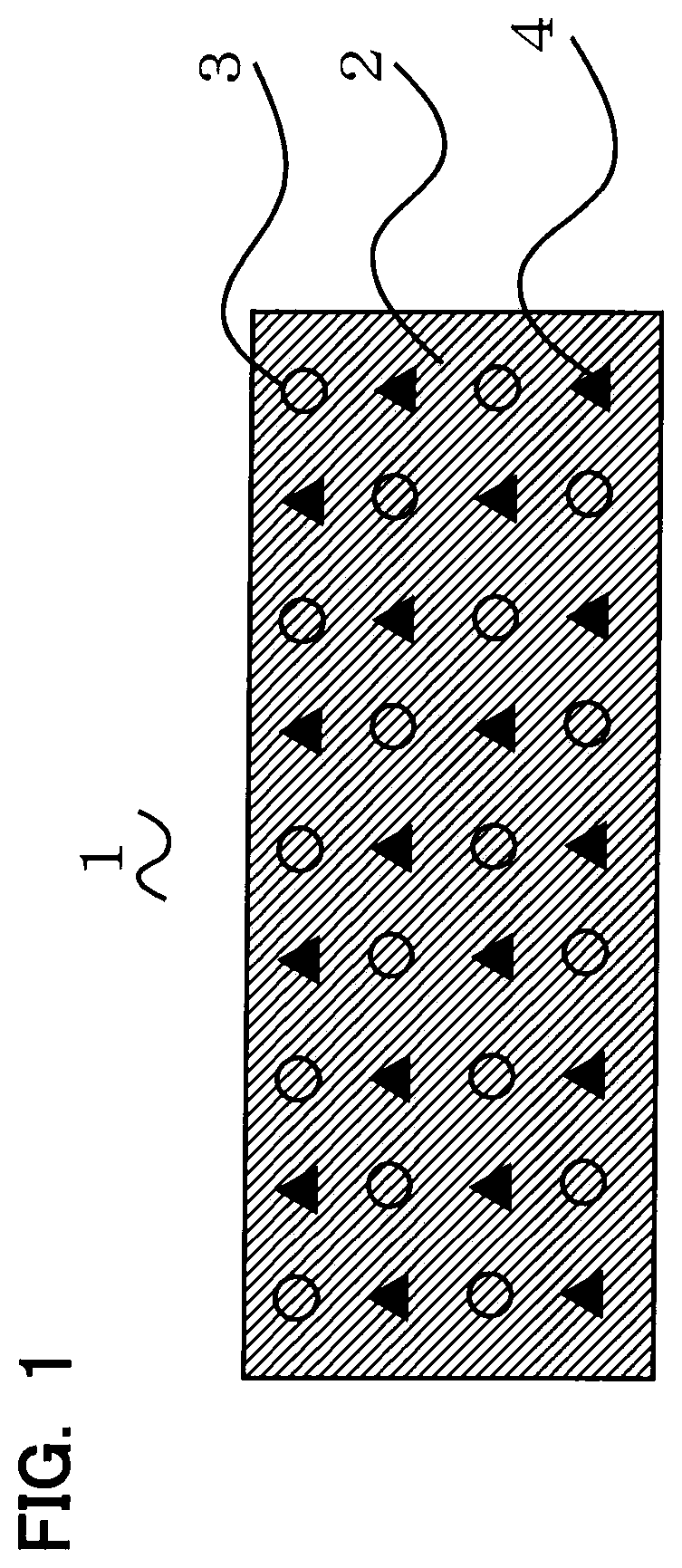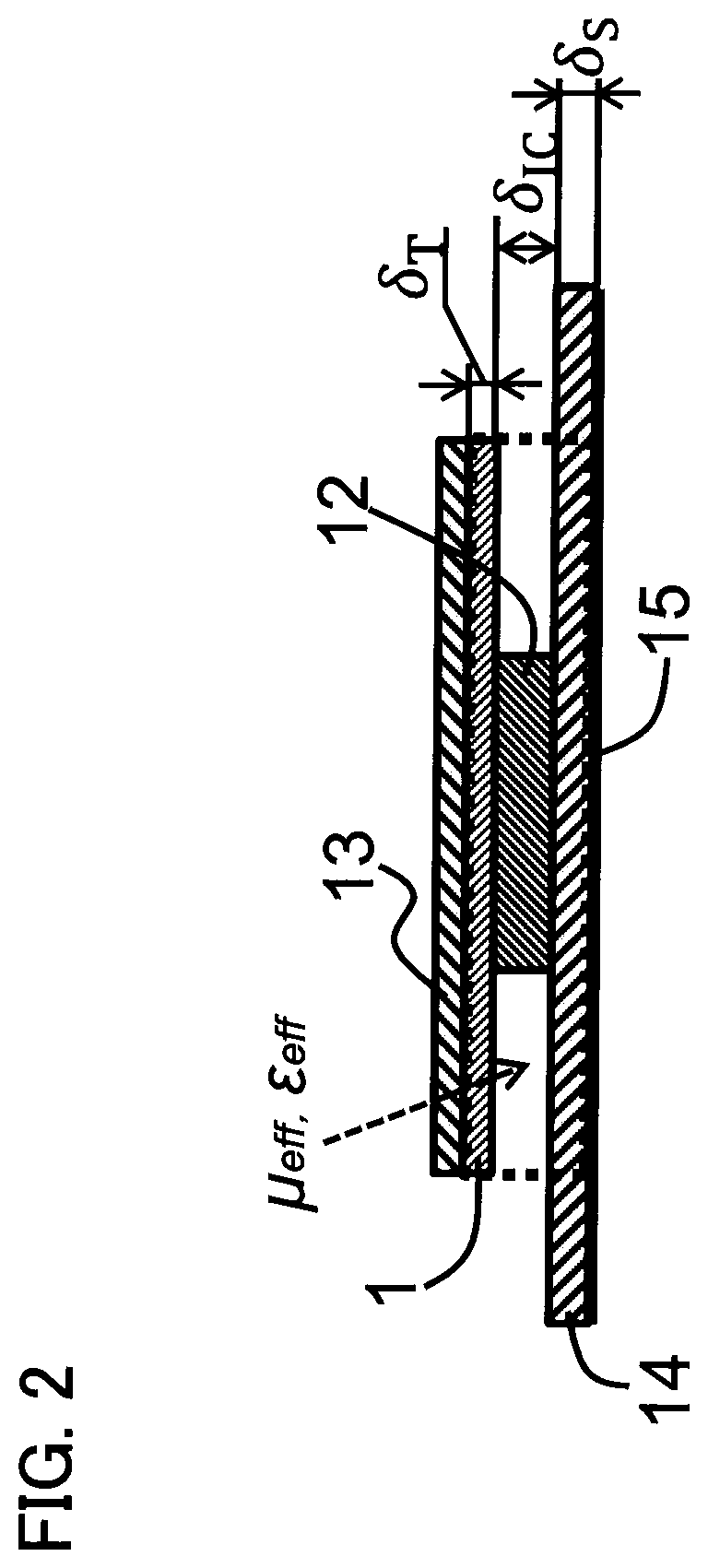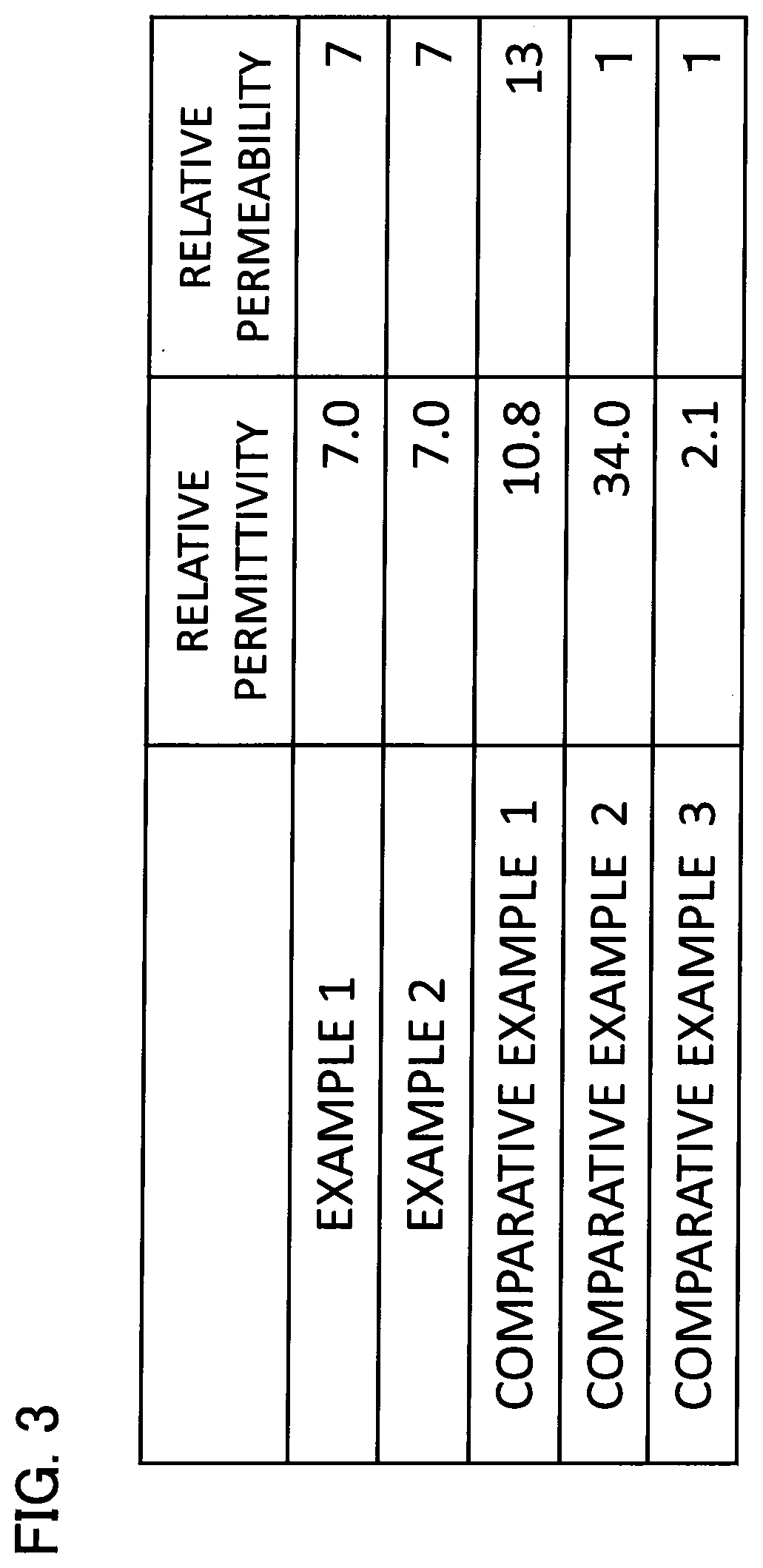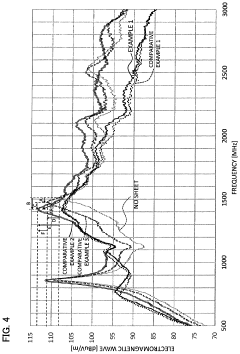How to Minimize Electromagnetic Wave Attenuation?
JUL 11, 20259 MIN READ
Generate Your Research Report Instantly with AI Agent
Patsnap Eureka helps you evaluate technical feasibility & market potential.
EM Wave Attenuation Background and Objectives
Electromagnetic wave attenuation is a critical phenomenon that affects the propagation of electromagnetic signals through various media. This process has been a subject of extensive research and development since the early days of wireless communication. The attenuation of electromagnetic waves occurs due to several factors, including absorption, scattering, and reflection, which collectively reduce the signal strength as it travels through space or materials.
The study of electromagnetic wave attenuation has its roots in the fundamental works of James Clerk Maxwell and Heinrich Hertz in the 19th century. Their groundbreaking discoveries laid the foundation for understanding the behavior of electromagnetic waves. As technology progressed, particularly with the advent of radio communication and radar systems in the early 20th century, the need to minimize signal attenuation became increasingly important.
Over the years, the field has evolved significantly, driven by the demands of various industries such as telecommunications, aerospace, and defense. The rapid growth of wireless technologies, including cellular networks, satellite communications, and the Internet of Things (IoT), has further intensified the focus on mitigating electromagnetic wave attenuation.
The primary objective in addressing electromagnetic wave attenuation is to maximize signal strength and quality over long distances or through challenging environments. This goal is crucial for ensuring reliable communication, accurate sensing, and efficient power transmission in a wide range of applications.
Key technological trends in this field include the development of advanced materials with unique electromagnetic properties, such as metamaterials and nanostructured composites. These materials offer the potential to manipulate electromagnetic waves in ways that were previously impossible, potentially leading to breakthrough solutions in attenuation reduction.
Another significant trend is the exploration of higher frequency bands, particularly in the millimeter-wave and terahertz regions. While these frequencies offer increased bandwidth and data capacity, they also present new challenges in terms of attenuation, driving research into novel propagation techniques and adaptive signal processing algorithms.
The ongoing evolution of 5G and future 6G technologies has placed renewed emphasis on overcoming attenuation issues, especially in urban environments and indoor spaces. This has spurred innovation in beamforming technologies, massive MIMO systems, and intelligent reflecting surfaces, all aimed at enhancing signal propagation and minimizing losses.
As we look to the future, the objectives in minimizing electromagnetic wave attenuation are likely to focus on achieving near-lossless transmission over long distances, developing more efficient and compact antenna systems, and creating smart, adaptive networks that can dynamically optimize signal paths to reduce attenuation effects.
The study of electromagnetic wave attenuation has its roots in the fundamental works of James Clerk Maxwell and Heinrich Hertz in the 19th century. Their groundbreaking discoveries laid the foundation for understanding the behavior of electromagnetic waves. As technology progressed, particularly with the advent of radio communication and radar systems in the early 20th century, the need to minimize signal attenuation became increasingly important.
Over the years, the field has evolved significantly, driven by the demands of various industries such as telecommunications, aerospace, and defense. The rapid growth of wireless technologies, including cellular networks, satellite communications, and the Internet of Things (IoT), has further intensified the focus on mitigating electromagnetic wave attenuation.
The primary objective in addressing electromagnetic wave attenuation is to maximize signal strength and quality over long distances or through challenging environments. This goal is crucial for ensuring reliable communication, accurate sensing, and efficient power transmission in a wide range of applications.
Key technological trends in this field include the development of advanced materials with unique electromagnetic properties, such as metamaterials and nanostructured composites. These materials offer the potential to manipulate electromagnetic waves in ways that were previously impossible, potentially leading to breakthrough solutions in attenuation reduction.
Another significant trend is the exploration of higher frequency bands, particularly in the millimeter-wave and terahertz regions. While these frequencies offer increased bandwidth and data capacity, they also present new challenges in terms of attenuation, driving research into novel propagation techniques and adaptive signal processing algorithms.
The ongoing evolution of 5G and future 6G technologies has placed renewed emphasis on overcoming attenuation issues, especially in urban environments and indoor spaces. This has spurred innovation in beamforming technologies, massive MIMO systems, and intelligent reflecting surfaces, all aimed at enhancing signal propagation and minimizing losses.
As we look to the future, the objectives in minimizing electromagnetic wave attenuation are likely to focus on achieving near-lossless transmission over long distances, developing more efficient and compact antenna systems, and creating smart, adaptive networks that can dynamically optimize signal paths to reduce attenuation effects.
Market Demand for Low-Loss EM Wave Transmission
The market demand for low-loss electromagnetic wave transmission has been steadily increasing across various industries, driven by the growing need for efficient and reliable communication systems. This demand is particularly evident in sectors such as telecommunications, aerospace, defense, and medical imaging, where minimizing signal attenuation is crucial for optimal performance.
In the telecommunications industry, the rollout of 5G networks has created a significant surge in demand for low-loss transmission solutions. As 5G technology operates at higher frequencies compared to previous generations, it faces greater challenges in terms of signal attenuation. This has led to increased investment in research and development of advanced materials and technologies that can effectively reduce electromagnetic wave losses.
The aerospace and defense sectors also contribute substantially to the market demand for low-loss EM wave transmission. These industries require high-performance communication systems for satellite communications, radar systems, and other mission-critical applications. The ability to transmit signals over long distances with minimal loss is essential for maintaining reliable communication links and ensuring accurate data transmission.
Medical imaging is another field driving the demand for low-loss EM wave transmission. Advanced imaging techniques such as magnetic resonance imaging (MRI) and computed tomography (CT) rely on precise electromagnetic wave propagation. Reducing signal attenuation in these applications can lead to improved image quality, faster scan times, and potentially lower radiation exposure for patients.
The Internet of Things (IoT) and smart city initiatives have further amplified the need for efficient EM wave transmission. As the number of connected devices continues to grow exponentially, the demand for low-loss communication technologies that can support high-density networks and long-range connectivity has increased significantly.
Market analysts project substantial growth in the low-loss EM wave transmission market over the coming years. This growth is expected to be fueled by ongoing technological advancements, increasing adoption of wireless technologies, and the expansion of 5G networks globally. Additionally, the development of new materials and innovative design techniques aimed at minimizing electromagnetic wave attenuation is likely to create new market opportunities.
As industries continue to push the boundaries of wireless communication and sensing technologies, the demand for solutions that can effectively minimize electromagnetic wave attenuation is expected to remain strong. This trend is likely to drive further innovation and investment in the field, leading to the development of more efficient and cost-effective technologies for low-loss EM wave transmission.
In the telecommunications industry, the rollout of 5G networks has created a significant surge in demand for low-loss transmission solutions. As 5G technology operates at higher frequencies compared to previous generations, it faces greater challenges in terms of signal attenuation. This has led to increased investment in research and development of advanced materials and technologies that can effectively reduce electromagnetic wave losses.
The aerospace and defense sectors also contribute substantially to the market demand for low-loss EM wave transmission. These industries require high-performance communication systems for satellite communications, radar systems, and other mission-critical applications. The ability to transmit signals over long distances with minimal loss is essential for maintaining reliable communication links and ensuring accurate data transmission.
Medical imaging is another field driving the demand for low-loss EM wave transmission. Advanced imaging techniques such as magnetic resonance imaging (MRI) and computed tomography (CT) rely on precise electromagnetic wave propagation. Reducing signal attenuation in these applications can lead to improved image quality, faster scan times, and potentially lower radiation exposure for patients.
The Internet of Things (IoT) and smart city initiatives have further amplified the need for efficient EM wave transmission. As the number of connected devices continues to grow exponentially, the demand for low-loss communication technologies that can support high-density networks and long-range connectivity has increased significantly.
Market analysts project substantial growth in the low-loss EM wave transmission market over the coming years. This growth is expected to be fueled by ongoing technological advancements, increasing adoption of wireless technologies, and the expansion of 5G networks globally. Additionally, the development of new materials and innovative design techniques aimed at minimizing electromagnetic wave attenuation is likely to create new market opportunities.
As industries continue to push the boundaries of wireless communication and sensing technologies, the demand for solutions that can effectively minimize electromagnetic wave attenuation is expected to remain strong. This trend is likely to drive further innovation and investment in the field, leading to the development of more efficient and cost-effective technologies for low-loss EM wave transmission.
Current Challenges in EM Wave Propagation
Electromagnetic wave propagation faces several significant challenges in modern communication systems and applications. One of the primary issues is signal attenuation, which occurs as electromagnetic waves travel through various media, resulting in reduced signal strength and quality.
Atmospheric absorption presents a major challenge, particularly for high-frequency waves. As electromagnetic waves propagate through the atmosphere, they interact with gas molecules, leading to energy absorption and signal degradation. This effect is more pronounced at certain frequencies, creating "atmospheric windows" that limit the usable spectrum for long-distance communications.
Multipath propagation is another critical challenge, especially in urban environments and indoor settings. Electromagnetic waves reflect off buildings, terrain, and other objects, causing multiple signal paths to reach the receiver. This phenomenon can result in constructive or destructive interference, leading to signal fading and distortion.
Ionospheric effects pose significant challenges for radio wave propagation, particularly in the high-frequency (HF) band. The ionosphere's dynamic nature, influenced by solar activity and diurnal variations, can cause unpredictable signal refraction, absorption, and scattering. These effects can lead to signal fading, frequency shifts, and communication blackouts.
Material penetration is a persistent challenge, particularly for indoor and underground communications. Building materials, such as concrete and metal, can significantly attenuate electromagnetic waves, reducing signal strength and coverage. This issue is especially problematic for emerging technologies like 5G, which rely on higher frequency bands with limited penetration capabilities.
Frequency-dependent attenuation is a challenge that affects different parts of the electromagnetic spectrum differently. Higher frequency waves generally experience greater attenuation over distance, limiting their range and requiring more complex infrastructure for long-distance communications.
Interference from both natural and artificial sources presents ongoing challenges. Solar radiation, lightning, and other atmospheric phenomena can disrupt electromagnetic wave propagation. Additionally, the increasing number of wireless devices and networks contributes to a crowded electromagnetic environment, leading to potential signal conflicts and degradation.
Polarization mismatch between transmitting and receiving antennas can result in significant signal loss. Maintaining proper polarization alignment is challenging, especially in mobile and dynamic environments, where antenna orientations may constantly change.
These challenges collectively contribute to the complexity of designing robust and efficient communication systems. Addressing them requires innovative approaches in antenna design, signal processing, and network architecture to minimize electromagnetic wave attenuation and ensure reliable communication across various applications and environments.
Atmospheric absorption presents a major challenge, particularly for high-frequency waves. As electromagnetic waves propagate through the atmosphere, they interact with gas molecules, leading to energy absorption and signal degradation. This effect is more pronounced at certain frequencies, creating "atmospheric windows" that limit the usable spectrum for long-distance communications.
Multipath propagation is another critical challenge, especially in urban environments and indoor settings. Electromagnetic waves reflect off buildings, terrain, and other objects, causing multiple signal paths to reach the receiver. This phenomenon can result in constructive or destructive interference, leading to signal fading and distortion.
Ionospheric effects pose significant challenges for radio wave propagation, particularly in the high-frequency (HF) band. The ionosphere's dynamic nature, influenced by solar activity and diurnal variations, can cause unpredictable signal refraction, absorption, and scattering. These effects can lead to signal fading, frequency shifts, and communication blackouts.
Material penetration is a persistent challenge, particularly for indoor and underground communications. Building materials, such as concrete and metal, can significantly attenuate electromagnetic waves, reducing signal strength and coverage. This issue is especially problematic for emerging technologies like 5G, which rely on higher frequency bands with limited penetration capabilities.
Frequency-dependent attenuation is a challenge that affects different parts of the electromagnetic spectrum differently. Higher frequency waves generally experience greater attenuation over distance, limiting their range and requiring more complex infrastructure for long-distance communications.
Interference from both natural and artificial sources presents ongoing challenges. Solar radiation, lightning, and other atmospheric phenomena can disrupt electromagnetic wave propagation. Additionally, the increasing number of wireless devices and networks contributes to a crowded electromagnetic environment, leading to potential signal conflicts and degradation.
Polarization mismatch between transmitting and receiving antennas can result in significant signal loss. Maintaining proper polarization alignment is challenging, especially in mobile and dynamic environments, where antenna orientations may constantly change.
These challenges collectively contribute to the complexity of designing robust and efficient communication systems. Addressing them requires innovative approaches in antenna design, signal processing, and network architecture to minimize electromagnetic wave attenuation and ensure reliable communication across various applications and environments.
Existing Solutions for Minimizing EM Wave Attenuation
01 Electromagnetic wave shielding materials
Various materials can be used to attenuate electromagnetic waves, including conductive fabrics, metal foils, and composite materials. These materials are designed to absorb, reflect, or dissipate electromagnetic energy, reducing its transmission through the shielding material.- Electromagnetic wave shielding materials: Various materials can be used to attenuate electromagnetic waves, including conductive fabrics, metal foils, and composite materials. These materials are designed to absorb, reflect, or dissipate electromagnetic energy, reducing its transmission through the material. The effectiveness of these shielding materials depends on factors such as their composition, thickness, and the frequency of the electromagnetic waves.
- Electromagnetic wave absorbers: Specialized absorbers can be used to attenuate electromagnetic waves by converting the wave energy into heat. These absorbers often utilize materials with high magnetic permeability or dielectric properties. They can be designed in various shapes and structures, such as pyramidal or wedge-shaped, to maximize their absorption capabilities across a wide range of frequencies.
- Waveguide structures for attenuation: Waveguide structures can be designed to attenuate electromagnetic waves by controlling their propagation. These structures may include specific geometries, materials, or coatings that cause the waves to lose energy as they travel through the waveguide. Techniques such as mode conversion, impedance matching, and the introduction of lossy materials can be employed to enhance attenuation within waveguides.
- Metamaterials for electromagnetic wave control: Metamaterials are engineered structures with unique electromagnetic properties that can be used to manipulate and attenuate electromagnetic waves. These materials can be designed to exhibit negative refractive indices, electromagnetic bandgaps, or other unusual properties that allow for enhanced control and attenuation of electromagnetic waves across various frequency ranges.
- Active attenuation systems: Active systems can be employed to dynamically attenuate electromagnetic waves. These systems may use sensors to detect incoming waves and generate opposing signals to cancel or reduce their intensity. Active attenuation can be particularly useful in scenarios where the characteristics of the electromagnetic waves change over time or where adaptive control is required for optimal performance.
02 Waveguide structures for electromagnetic wave attenuation
Specialized waveguide structures can be designed to attenuate electromagnetic waves. These structures may include specific geometries, materials, or coatings that help to reduce the propagation of electromagnetic energy through the waveguide.Expand Specific Solutions03 Electromagnetic absorbing materials
Certain materials, such as ferrites, carbon-based composites, and metamaterials, can be engineered to effectively absorb electromagnetic waves across specific frequency ranges. These materials convert electromagnetic energy into heat, thereby reducing the intensity of the transmitted waves.Expand Specific Solutions04 Multilayer structures for electromagnetic wave attenuation
Multilayer structures consisting of different materials with varying electromagnetic properties can be designed to provide enhanced attenuation across a wide frequency range. These structures may combine conductive, resistive, and absorptive layers to achieve optimal attenuation performance.Expand Specific Solutions05 Active electromagnetic wave attenuation systems
Active systems can be employed to dynamically attenuate electromagnetic waves. These systems may use sensors to detect incoming electromagnetic energy and generate opposing fields to cancel or reduce the intensity of the waves. Such systems can adapt to changing electromagnetic environments for optimal attenuation.Expand Specific Solutions
Key Players in EM Wave Technology Industry
The competitive landscape for minimizing electromagnetic wave attenuation is characterized by a mature market with established players and ongoing technological advancements. The market is substantial, driven by increasing demand for improved signal quality in telecommunications, aerospace, and defense sectors. Key players like Sumitomo Electric Industries, Mitsubishi Gas Chemical, and Toshiba Electronic Devices & Storage Corp. are at the forefront, leveraging their expertise in materials science and electronic components. Universities and research institutions, such as the University of Electronic Science & Technology of China and the Naval Research Laboratory, contribute significantly to innovation in this field. The technology's maturity is evident, with companies like TOPPAN and Ricoh offering specialized solutions, while emerging players like Dexerials Corp. focus on developing advanced materials to address attenuation challenges.
Electronics & Telecommunications Research Institute
Technical Solution: ETRI has developed advanced electromagnetic wave attenuation minimization techniques, focusing on metamaterial-based solutions. Their approach involves designing and fabricating artificial electromagnetic structures with unique properties not found in nature. These metamaterials can manipulate electromagnetic waves in ways that reduce attenuation, such as creating negative refractive index materials or electromagnetic bandgap structures. ETRI's research has shown promising results in creating ultra-thin, lightweight electromagnetic wave absorbers that can achieve up to 99% absorption efficiency across a wide frequency range[1][3]. Additionally, they have explored the use of graphene-based composites to enhance electromagnetic shielding effectiveness while maintaining minimal thickness[2].
Strengths: Cutting-edge metamaterial technology, high absorption efficiency, wide frequency range coverage. Weaknesses: Potential high production costs, complexity in large-scale manufacturing.
The Boeing Co.
Technical Solution: Boeing has invested heavily in developing advanced materials and coatings to minimize electromagnetic wave attenuation in aerospace applications. Their approach combines innovative material science with sophisticated electromagnetic modeling. Boeing's research focuses on creating multi-functional composite materials that offer both structural integrity and electromagnetic wave management. They have developed radar-absorbing materials (RAM) that can be integrated into aircraft structures, reducing radar cross-section while maintaining aerodynamic performance[4]. Boeing has also explored the use of frequency selective surfaces (FSS) and artificial magnetic conductors (AMC) to create "smart skins" for aircraft, which can selectively attenuate or transmit specific electromagnetic frequencies[5]. These technologies not only minimize attenuation but also enhance stealth capabilities in military applications.
Strengths: Integrated structural and electromagnetic solutions, advanced modeling capabilities. Weaknesses: High development costs, primarily focused on aerospace applications.
Core Innovations in Low-Loss EM Wave Transmission
Electromagnetic interference shielding assembly
PatentInactiveUS20050073822A1
Innovation
- A single EMI shielding assembly with a metal plate featuring slots and wall components formed by stamping, which divides the circuit board into zones, preventing EMI between components by using electromagnetic wave-impenetrable materials and extending along a horizontal plane with predetermined heights, thereby isolating different zones and reducing cross-component interference.
Thermally Conductive Composition
PatentActiveUS20200022291A1
Innovation
- A thermally conductive composition comprising a base material with a permittivity adjusting filler having a lower permittivity and a high permeability filler, resulting in a relative permeability greater than 1 and a relative permittivity of 7 or lower, which reduces electromagnetic waves by shifting the resonant frequency to a higher range and minimizing electrostatic capacitance between electronic components and heat dissipation devices.
Environmental Impact of EM Wave Technologies
The environmental impact of electromagnetic (EM) wave technologies is a growing concern as these technologies become increasingly prevalent in our daily lives. The proliferation of wireless communication systems, radar installations, and other EM-based devices has led to a significant increase in electromagnetic radiation in the environment. This radiation, while generally considered non-ionizing and less harmful than ionizing radiation, still poses potential risks to both human health and ecosystems.
One of the primary environmental concerns is the effect of EM waves on wildlife, particularly birds and insects. Studies have shown that EM radiation can interfere with the navigation systems of migratory birds, potentially disrupting their migration patterns and breeding cycles. Similarly, insects, especially bees, may be affected by EM fields, which could have far-reaching consequences for pollination and ecosystem balance.
The impact of EM wave technologies on plant life is another area of concern. Some research suggests that exposure to high levels of EM radiation can affect plant growth, seed germination, and overall plant health. This could have implications for agriculture and natural ecosystems, particularly in areas with high concentrations of EM-emitting devices.
In aquatic environments, EM waves can potentially affect marine life. Studies have indicated that certain marine species, such as sharks and rays, which use electromagnetic fields for navigation and prey detection, may be particularly sensitive to artificial EM radiation. This could lead to changes in behavior, migration patterns, and overall ecosystem dynamics in marine environments.
The increasing deployment of 5G networks and other advanced wireless technologies has raised new environmental concerns. The higher frequency bands used by these technologies require a denser network of antennas and base stations, potentially leading to increased energy consumption and electronic waste. This expansion of infrastructure also raises questions about land use and visual pollution in both urban and rural areas.
To address these environmental concerns, researchers and policymakers are exploring various mitigation strategies. These include developing more energy-efficient EM technologies, optimizing network designs to reduce the number of required transmitters, and implementing stricter regulations on EM emissions. Additionally, there is a growing focus on creating "electromagnetic sanctuaries" – areas with minimal EM radiation to protect sensitive ecosystems and wildlife.
As we continue to advance EM wave technologies, it is crucial to balance technological progress with environmental stewardship. This requires ongoing research into the long-term effects of EM radiation on ecosystems, as well as the development of innovative solutions to minimize its environmental impact. By addressing these challenges, we can harness the benefits of EM wave technologies while preserving the health and integrity of our natural environment.
One of the primary environmental concerns is the effect of EM waves on wildlife, particularly birds and insects. Studies have shown that EM radiation can interfere with the navigation systems of migratory birds, potentially disrupting their migration patterns and breeding cycles. Similarly, insects, especially bees, may be affected by EM fields, which could have far-reaching consequences for pollination and ecosystem balance.
The impact of EM wave technologies on plant life is another area of concern. Some research suggests that exposure to high levels of EM radiation can affect plant growth, seed germination, and overall plant health. This could have implications for agriculture and natural ecosystems, particularly in areas with high concentrations of EM-emitting devices.
In aquatic environments, EM waves can potentially affect marine life. Studies have indicated that certain marine species, such as sharks and rays, which use electromagnetic fields for navigation and prey detection, may be particularly sensitive to artificial EM radiation. This could lead to changes in behavior, migration patterns, and overall ecosystem dynamics in marine environments.
The increasing deployment of 5G networks and other advanced wireless technologies has raised new environmental concerns. The higher frequency bands used by these technologies require a denser network of antennas and base stations, potentially leading to increased energy consumption and electronic waste. This expansion of infrastructure also raises questions about land use and visual pollution in both urban and rural areas.
To address these environmental concerns, researchers and policymakers are exploring various mitigation strategies. These include developing more energy-efficient EM technologies, optimizing network designs to reduce the number of required transmitters, and implementing stricter regulations on EM emissions. Additionally, there is a growing focus on creating "electromagnetic sanctuaries" – areas with minimal EM radiation to protect sensitive ecosystems and wildlife.
As we continue to advance EM wave technologies, it is crucial to balance technological progress with environmental stewardship. This requires ongoing research into the long-term effects of EM radiation on ecosystems, as well as the development of innovative solutions to minimize its environmental impact. By addressing these challenges, we can harness the benefits of EM wave technologies while preserving the health and integrity of our natural environment.
Standardization Efforts in EM Wave Transmission
Standardization efforts in electromagnetic wave transmission have become increasingly crucial as the demand for efficient and reliable communication systems continues to grow. These efforts aim to establish common guidelines and protocols that ensure interoperability, reduce interference, and optimize performance across various applications and industries.
One of the primary organizations leading the charge in standardization is the International Telecommunication Union (ITU). The ITU has developed numerous recommendations and standards for electromagnetic wave transmission, covering aspects such as frequency allocation, modulation techniques, and signal quality parameters. These standards help minimize attenuation by providing a framework for optimal system design and implementation.
The Institute of Electrical and Electronics Engineers (IEEE) has also made significant contributions to standardization in this field. Their 802 series of standards, particularly those related to wireless communications, address various aspects of electromagnetic wave transmission. These standards define protocols for different frequency bands, modulation schemes, and error correction techniques, all of which contribute to minimizing attenuation and improving overall system performance.
In the realm of mobile communications, the 3rd Generation Partnership Project (3GPP) has been instrumental in developing standards for cellular networks. Their specifications for 4G LTE and 5G technologies include provisions for advanced antenna systems, beamforming techniques, and adaptive modulation schemes, all aimed at reducing electromagnetic wave attenuation and enhancing signal quality.
The European Telecommunications Standards Institute (ETSI) has also played a vital role in standardization efforts, particularly in the development of standards for short-range wireless communications. Their work on technologies such as Bluetooth and Wi-Fi has helped establish common protocols that minimize interference and optimize transmission efficiency in crowded electromagnetic environments.
Standardization efforts have also extended to specific industries and applications. For instance, in the automotive sector, organizations like the Car Connectivity Consortium (CCC) have developed standards for in-vehicle wireless communication systems, addressing the unique challenges of electromagnetic wave transmission within the confines of a vehicle.
These standardization efforts collectively contribute to minimizing electromagnetic wave attenuation by promoting best practices, encouraging the adoption of advanced technologies, and ensuring compatibility between different systems and devices. As technology continues to evolve, ongoing collaboration between industry stakeholders, research institutions, and standardization bodies will be essential to address emerging challenges and opportunities in electromagnetic wave transmission.
One of the primary organizations leading the charge in standardization is the International Telecommunication Union (ITU). The ITU has developed numerous recommendations and standards for electromagnetic wave transmission, covering aspects such as frequency allocation, modulation techniques, and signal quality parameters. These standards help minimize attenuation by providing a framework for optimal system design and implementation.
The Institute of Electrical and Electronics Engineers (IEEE) has also made significant contributions to standardization in this field. Their 802 series of standards, particularly those related to wireless communications, address various aspects of electromagnetic wave transmission. These standards define protocols for different frequency bands, modulation schemes, and error correction techniques, all of which contribute to minimizing attenuation and improving overall system performance.
In the realm of mobile communications, the 3rd Generation Partnership Project (3GPP) has been instrumental in developing standards for cellular networks. Their specifications for 4G LTE and 5G technologies include provisions for advanced antenna systems, beamforming techniques, and adaptive modulation schemes, all aimed at reducing electromagnetic wave attenuation and enhancing signal quality.
The European Telecommunications Standards Institute (ETSI) has also played a vital role in standardization efforts, particularly in the development of standards for short-range wireless communications. Their work on technologies such as Bluetooth and Wi-Fi has helped establish common protocols that minimize interference and optimize transmission efficiency in crowded electromagnetic environments.
Standardization efforts have also extended to specific industries and applications. For instance, in the automotive sector, organizations like the Car Connectivity Consortium (CCC) have developed standards for in-vehicle wireless communication systems, addressing the unique challenges of electromagnetic wave transmission within the confines of a vehicle.
These standardization efforts collectively contribute to minimizing electromagnetic wave attenuation by promoting best practices, encouraging the adoption of advanced technologies, and ensuring compatibility between different systems and devices. As technology continues to evolve, ongoing collaboration between industry stakeholders, research institutions, and standardization bodies will be essential to address emerging challenges and opportunities in electromagnetic wave transmission.
Unlock deeper insights with Patsnap Eureka Quick Research — get a full tech report to explore trends and direct your research. Try now!
Generate Your Research Report Instantly with AI Agent
Supercharge your innovation with Patsnap Eureka AI Agent Platform!
